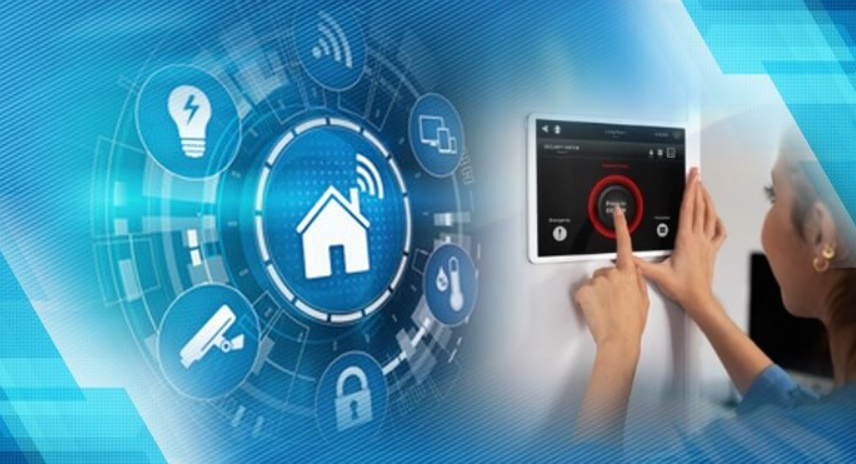The Rise of Smart Homes: Technology at Your Fingertips

Introduction to Smart Homes
The concept of a home is evolving rapidly, and at the heart of this transformation is the rise of smart homes. These technologically advanced living spaces are designed to enhance convenience, comfort, security, and energy efficiency by integrating connected devices and automation systems into everyday life. The idea of controlling your lights, thermostat, security cameras, and even household appliances from your smartphone or through voice commands is no longer a futuristic fantasy—it’s very much a present-day reality. As more homeowners embrace smart home technology, the way we live and interact with our homes is being revolutionized, bringing unprecedented levels of ease and efficiency right to our fingertips.
The Evolution of Smart Home Technology
Smart homes didn’t appear overnight. Their development is a result of decades of innovation and advancements in home automation and connectivity.
Early Automation Systems
The journey began with simple programmable thermostats and remote-controlled devices in the late 20th century. These early systems allowed homeowners to perform basic functions like adjusting heating or lighting remotely but were limited in scope and accessibility.
See also: The Future of Technology: Trends to Watch in 2025
Modern IoT Devices and Connectivity
The explosion of the Internet of Things (IoT) has been the true game-changer. By connecting devices through the internet and enabling communication between them, IoT has paved the way for fully integrated smart homes where systems work harmoniously to respond to the user’s needs in real-time.
Key Technologies Driving Smart Homes
Several technologies converge to make smart homes functional and efficient.
Internet of Things (IoT)
IoT serves as the backbone of smart home technology. It connects diverse devices, from light bulbs to refrigerators, allowing them to share data and be controlled remotely or automatically.
Artificial Intelligence and Machine Learning
AI elevates smart homes from simple automation to intelligent environments that learn user habits and preferences to optimize home functions without constant manual input.
Voice Assistants and Natural Language Processing
Voice-controlled assistants like Amazon Alexa, Google Assistant, and Apple’s Siri have made managing smart homes more intuitive, allowing users to control devices hands-free with natural language commands.
Popular Smart Home Devices and Their Functions
Smart home technology spans a wide variety of devices designed to improve different aspects of home living.
Smart Lighting Systems
Smart lighting allows users to control brightness, color, and schedules remotely, creating ambiance while saving energy.
Smart Thermostats
These devices adjust heating and cooling based on occupancy and weather patterns, providing comfort while reducing utility bills.
Security and Surveillance Systems
Smart locks, cameras, motion detectors, and alarm systems provide real-time alerts and remote monitoring, significantly boosting home security.
Smart Appliances
From refrigerators that track grocery needs to washing machines that start remotely, smart appliances add convenience and efficiency to household chores.
Benefits of Smart Homes
The surge in smart home adoption is driven by multiple tangible benefits.
Convenience and Comfort
Automating routine tasks like lighting, climate control, and entertainment makes daily life more effortless and enjoyable.
Energy Efficiency and Cost Savings
Smart systems optimize resource use, lowering energy consumption and reducing utility costs, benefiting both the environment and your wallet.
Enhanced Security
With instant alerts and remote surveillance, smart homes offer peace of mind by keeping your property and loved ones safer.
Challenges and Concerns in Smart Home Adoption
Despite many benefits, smart homes come with some challenges.
Privacy and Data Security
With devices collecting personal data, safeguarding privacy and preventing hacking attempts are critical concerns.
Compatibility and Integration
Different brands and technologies may not always work seamlessly together, complicating the user experience.
Cost and Accessibility
Initial setup costs and technological complexity can be barriers, limiting access for some homeowners.
The Future of Smart Homes
The smart home landscape continues to evolve with exciting innovations on the horizon.
Smart Home Ecosystems
Future homes will likely feature fully integrated ecosystems where all devices operate in synergy for a seamless user experience.
Advances in AI and Predictive Automation
Homes will become more proactive, anticipating needs based on patterns and preferences with minimal user intervention.
Sustainable and Green Smart Homes
Eco-conscious technology will play a larger role, with smart homes contributing actively to energy conservation and sustainability.
How to Get Started with Building Your Smart Home
Thinking of joining the smart home revolution? Here are some practical steps.
Assessing Your Needs
Identify which aspects of your home life could benefit most from automation, such as security, lighting, or climate control.
Choosing the Right Devices
Look for devices that are compatible, user-friendly, and within your budget to avoid frustration down the line.
Setting Up and Managing Your Smart Home
Many systems offer apps with easy installation guides—start small, then gradually expand your smart ecosystem.
FAQs About Smart Homes
Q1: Are smart homes difficult to set up?
A: Many smart devices are designed for easy DIY installation, with user-friendly apps guiding the process.
Q2: Can smart homes save me money?
A: Yes, especially through energy-efficient devices like smart thermostats and lighting that reduce utility bills.
Q3: Are smart home devices secure?
A: While they come with security risks, using strong passwords, updated firmware, and trusted brands mitigates threats.
Q4: Do smart homes require internet?
A: Most smart home functions rely on internet connectivity for remote control and automation.
Q5: Can I control smart devices without voice assistants?
A: Absolutely, most devices can be controlled via dedicated apps on smartphones or tablets.
Q6: What if I have multiple brands of smart devices?
A: Many platforms like Apple HomeKit or Google Home support a range of brands, but checking compatibility before purchase is important.
Conclusion: Embracing the Smart Home Revolution
The rise of smart homes marks a significant milestone in how we interact with our living environments. With technology literally at your fingertips, you can enjoy enhanced comfort, security, and energy savings like never before. While challenges remain, ongoing advancements promise smarter, safer, and more sustainable homes for the future. Now is the perfect time to embrace smart home technology and transform the way you live.

